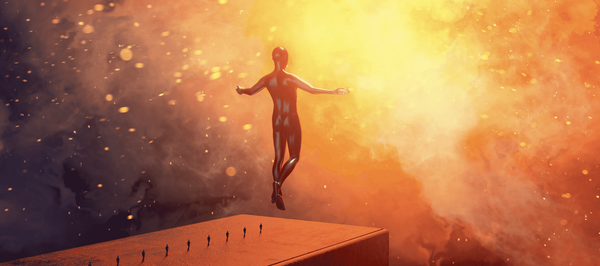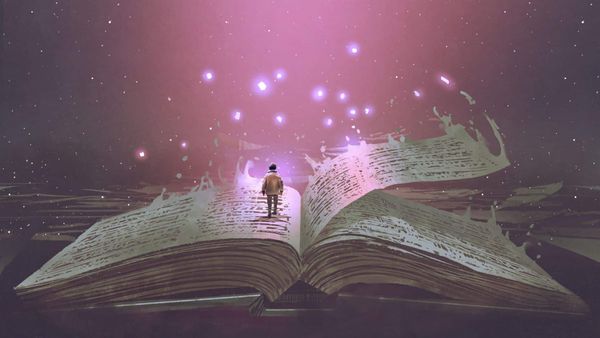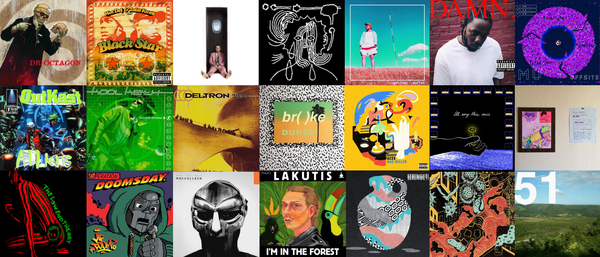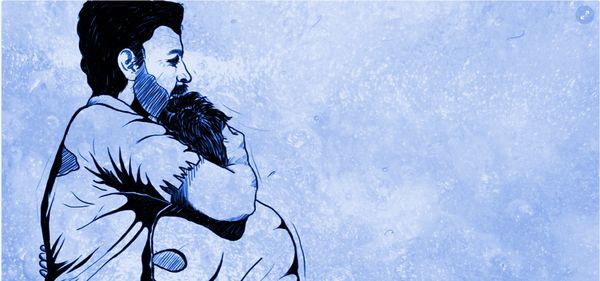Jordan Bates • • 8 min read
10 Reasons You Really Ought to Make Some F**king Art

“Art is the proper task of life.”
— Friedrich Nietzsche
I love making things. I always have. I remember as a youngster spending hours drawing pictures of Spider-Man and Dragonball Z characters. As a kid I also played piano (a skill I hope to reclaim) and more recently, I dabble in acoustic guitar. In college I started and continue to write fiction and poetry. A year and a half ago I began creating my blog. As of a few months ago I also make weird rap songs about philosophers, 90s cartoons, and chupacabras.
Creative expression has claimed a significant chunk of the strange and ever-shifting mosaic that is my life and my identity. I spend so much of my time immersed in or producing artistic products that I don’t have any idea what I’d do without that portion of my being. Sort of how I feel about pizza. Art is like endless pizza for the brain (going to regret that simile)—it nourishes and satiates me in myriad ways, some of which I probably can’t articulate.
Luckily, I can articulate some of them, so I made this nice list of reasons why I love making things and why, perhaps, you could also. Typically I shy away from listicles, but dammit, this is the Internet and the Internet loves listicles, so here’s a listicle. Hopefully you’ll find more substance in this one than in the average Buzzfeed post.
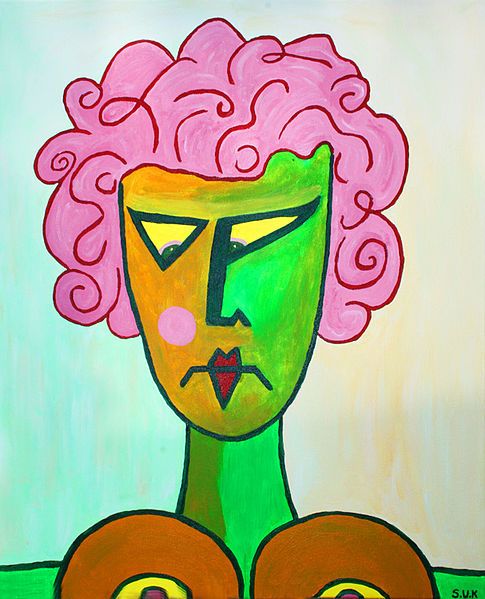
Babushka by Sandra Kastås. Via Wikimedia Commons
1. It’s so f***ing human.
The human animal differs from other species in many ways (some of which are arguably hideous), but perhaps one of the most extraordinary differences is our ability to imagine things that do not exist and create them in the world. Artistic expression is a thread of continuity between all human cultures across oceans of time. Imagination is such a fundamental part of who we are that we automatically create fantasy worlds and stories while we’re asleep. Kurt Vonnegut summed it up well in Timequake when he wrote:
“The arts are not a way to make a living. They are a very human way of making life more bearable. Practicing an art, no matter how well or badly, is a way to make your soul grow, for heaven’s sake. Sing in the shower. Dance to the radio. Tell stories. Write a poem to a friend, even a lousy poem. Do it as well as you possibly can. You will get an enormous reward. You will have created something.”
2. You’re free as a dragon, son.
Okay, well, you can’t fly or breathe fire, except in your head. But really, the only boundaries in art are formed by three things: a) physics b) your equipment/materials c) your imagination.
For some people, the word “art” connotes a world where people use lofty, highfalutin language to talk for 30 minutes about a picture of some trees. Or of impoverished dudes with dusty hats and furrowed brows who lock themselves in cramped, shadowy studios to slave over their masterpiece.
These are outmoded and seriously limiting ideas about what “art” can mean (even the experts can’t agree on what it means) or be. Art could be you drawing a picture of Obama dressed as Peter Pan carrying a light saber riding a woolly mammoth (someone, please go do that). It could mean building sweet longboards and painting Ron Burgundy or Darth Vader on the bottom, like a friend of mine does. It could mean brewing experimental beers or constructing picturesque rocking chairs or taking candid photographs of chinchillas or making exceptionally clever and elaborate Snapchats. Art = endless possibilities = life = …. I digress.
Read: 9 Sketching Exercises Leonardo da Vinci Used to Achieve Artistic Mastery
3. Art is communication, man.
To create something is to express yourself in a way that you would otherwise not be able to — to connect with others on a different and perhaps much deeper level than is allowed by normal interaction. Even something like a gorgeous, handmade piece of pottery reveals a person’s diligence, attention to detail, patience, vision, and commitment to perfecting a craft. Mediums like film or fiction-writing or music can communicate a whole lot more than that—they can contain personalities and worldviews and hope and despair and lust and madness, the entire gamut of human experience.
4. You’ll be more original than original sin, m’boy.
There’s really no better way to be indisputably and exclusively yourself than to create something that only you can dream up and make. Art is a means of defining and affirming your individuality, of distinguishing what is yours and yours alone. Of course, as anyone who creates things realizes, it turns out to be insanely difficult to do something truly new or wildly different than what others have done. That’s okay. We try anyway, and we’re still unique, just like everyone else (yay for worn-out jokes).
5. It’s f***ing fun.
Some consider art to be a purely serious and almost solemn endeavor. While I think there’s absolutely a place for that attitude and for darker art, creating can also be joyful and playful. When Heems of the now-disbanded (RIP) rap group Das Racist wrote the words, “Hello, Young Cocoa Butter, who is you? / White people love me like they love Subarus,” he was joking around and having fun. Ray Bradbury once wrote:
Anything you love, you do it. It’s got to be with a great sense of fun. Writing is not a serious business. It’s a joy and a celebration. You should be having fun with it. Ignore the authors who say ‘Oh, my God, what word? Oh, Jesus Christ…,’ you know. Now, to hell with that. It’s not work. If it’s work, stop and do something else.
I try to approach things that I make with this same spirit of enjoyment (doesn’t always work). I want to be amused, excited, and/or soothed by the creative process, not stoic or filled with doubt and worry about possible “mistakes” I’m making.
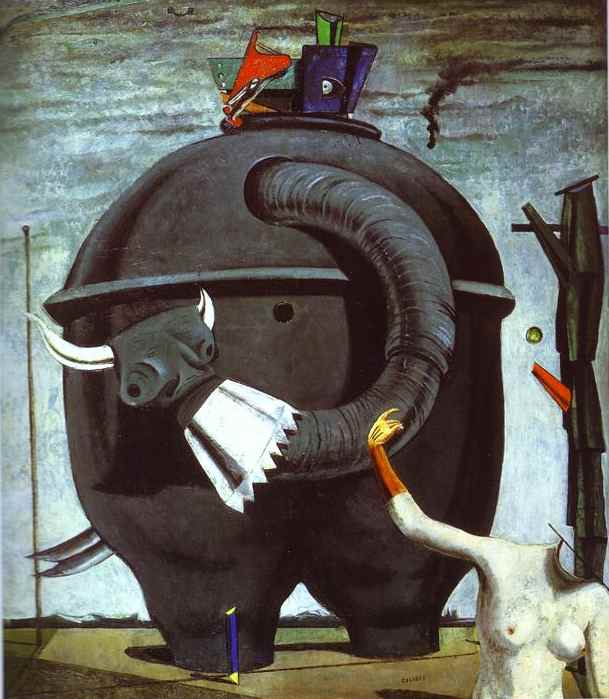
The Elephant Celebes by Max Ernst, 1921. Via Wikipedia
6. It’s a release, an “artgasm”.
Like an enormous cathartic dump — Art, she is. We’re all walking around with various anxieties, struggles, fears, hopes, and uncertainties, many of which we may not even be aware of. Art provides a sort of infinite void into which we can pour everything inside of us. We grope and wrench and snatch and tweeze all of these aspects of our ridiculously complex inner worlds and let them spill out into a poem or a song or a story or a stand-up comedy routine. And when we’re done, maybe we feel a bit lighter, or perhaps we’ve accepted things that were troubling us.
7. Purpose and pride. (not a Jane Austen novel)
Building things beyond ourselves and larger than ourselves seems to provide a sense of purpose. You’re working toward realizing your quirky vision; you notice that you’re getting better and you feel proud; you can see the work starting to take shape and you’re glad you’re making that happen, dammit. The more time you spend, the more meaningful the piece or project becomes—the more it is a part of you and a reflection of you.
8. Lose yourself like Eminem did.
“In the music, the moment. / You own it. You better never let it go.” This universally-known quote from a song that we’ve all heard a few (hundred) too many times is somehow appropriate. Art allows you to enter a place where you forget yourself, a place where you’re simply flowing with what you’re doing, entirely focused on the thing you’re imagining, and everything else melts away. This is a wonderful space to discover, a sort of Never Never Land (that’s two Peter Pan references in one article, for those counting) that is always available.
Read: David Kassan’s Attempt to Revolutionize Portrait Painting
9. It’s intrinsically f***ing rewarding.
Many people do things for some external reason—to make money or please someone else or further some agenda. Some people make art partially out of extrinsic motivation (not always as sinister as it seems), but a beautiful thing about art is that it can be an end in itself.
The quest of creating something—the questions, the discovery of the thing, the flailing around, the moments of surprise and child-like wonder and delight and excitement, the final product that you weren’t really expecting—can be reason enough to do the work and may even bring you something rather difficult to find elsewhere. You impregnated your mind and heart and gave birth to a reality that no one had ever seen or conceived of previously. I hope I haven’t over-romanticized in such a way as to activate your gag reflex, but seriously, that’s pretty neat, boys and girls.
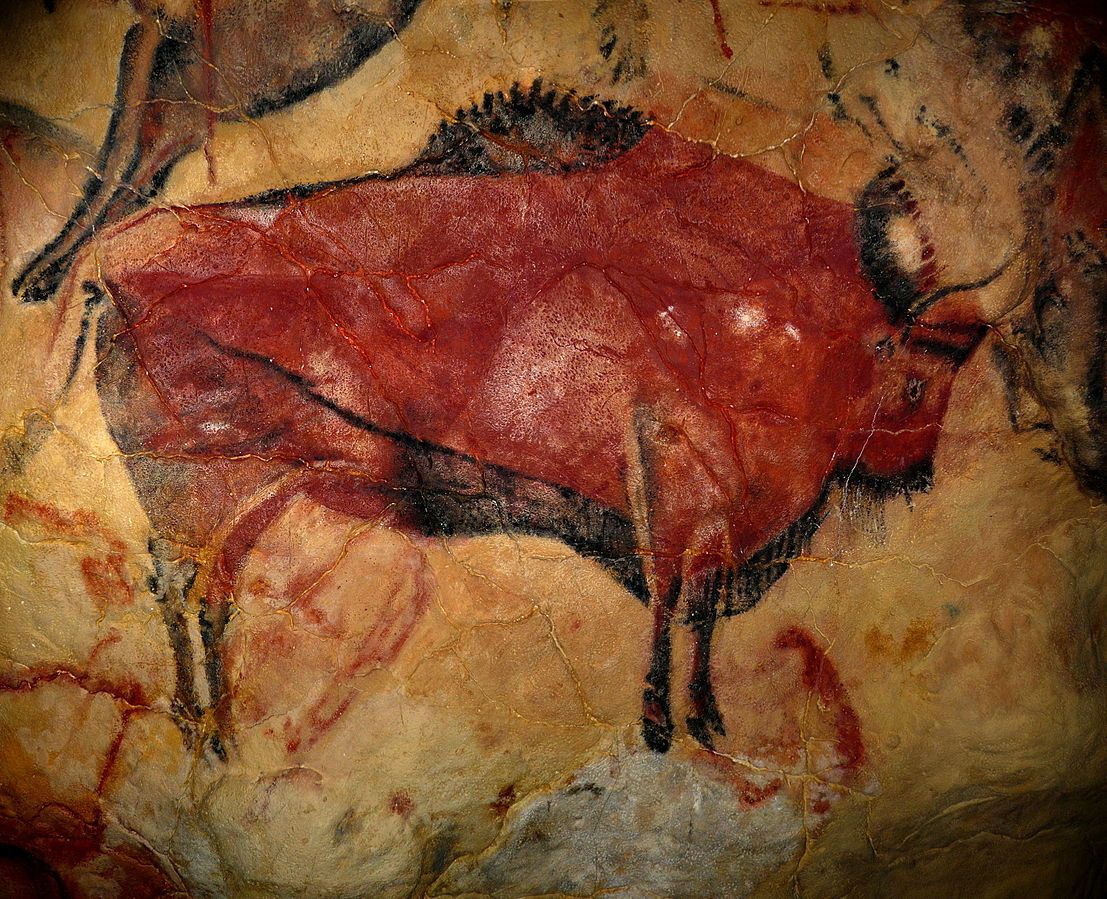
Bison painting in Altamira Cave in Spain dated 20,000-35,000 years old.
10. You will die, but it won’t.
Pretty serious bummer, I know, but someday you and I and everyone we know will be nothing more than dirt and bone dust. Our human selves have expiration dates (unless immortality via technology happens anytime soon; not so sure I’d sign up), but art doesn’t really have to.
Or, at the very least, it can last a hell of a lot longer than us. I mean, we’re still appreciating bison that were painted on cave walls 40,000 years ago. Our early painter-ancestors are long gone, but they left us a time capsule that connects us to the past and tells us something valuable about who we are and where we come from. Think of all of the other artists—Homer, Chaucer, Michelangelo, Shakespeare, Beethoven, et al.—who have long since met their maker yet still affect us with what they made.
Such legacies are… incredibly cool. And while I’m not saying that you or I are going to create something that humanity will treasure in 40 millennia (though, who knows), I do think we can make things that, at the very least, our descendants might one day appreciate. “Hey kids, let’s read this bizarre story that your great-great-grandpa Jordan wrote when he was 23 years old.”
I don’t know about you, but I feel there’s something sublime in that idea—living on through the pieces of ourselves that we capture within the things we create.
—
An EXTRAORDINARY Book on Art
If you appreciated this post, you’ll absolutely love Lewis Hyde’s The Gift: Creativity and the Artist in the Modern World. It was a favorite book of the late genius, David Foster Wallace, and passes on profound wisdom on the sacred nature of art and sharing one’s gifts with the world.
This article was originally published on www.refinethemind.com

Jordan Bates
Jordan Bates is a lover of God, father, leadership coach, heart healer, writer, artist, and long-time co-creator of HighExistence. — www.jordanbates.life


